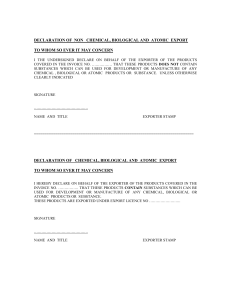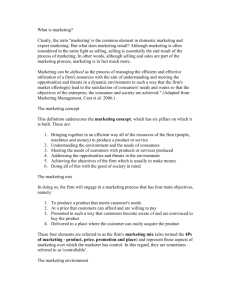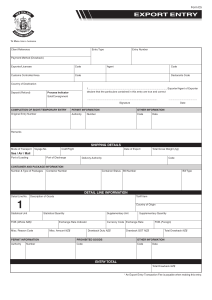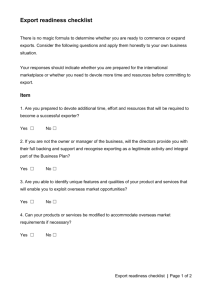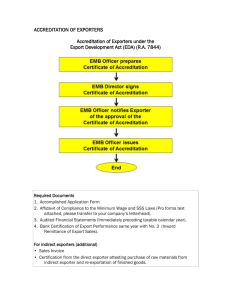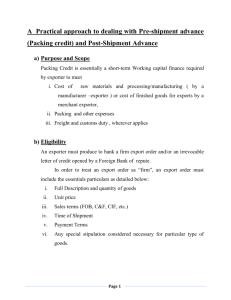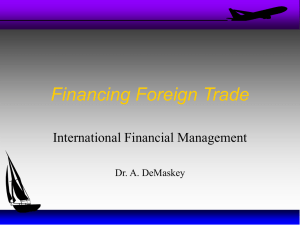EXPORT MARKETING
advertisement
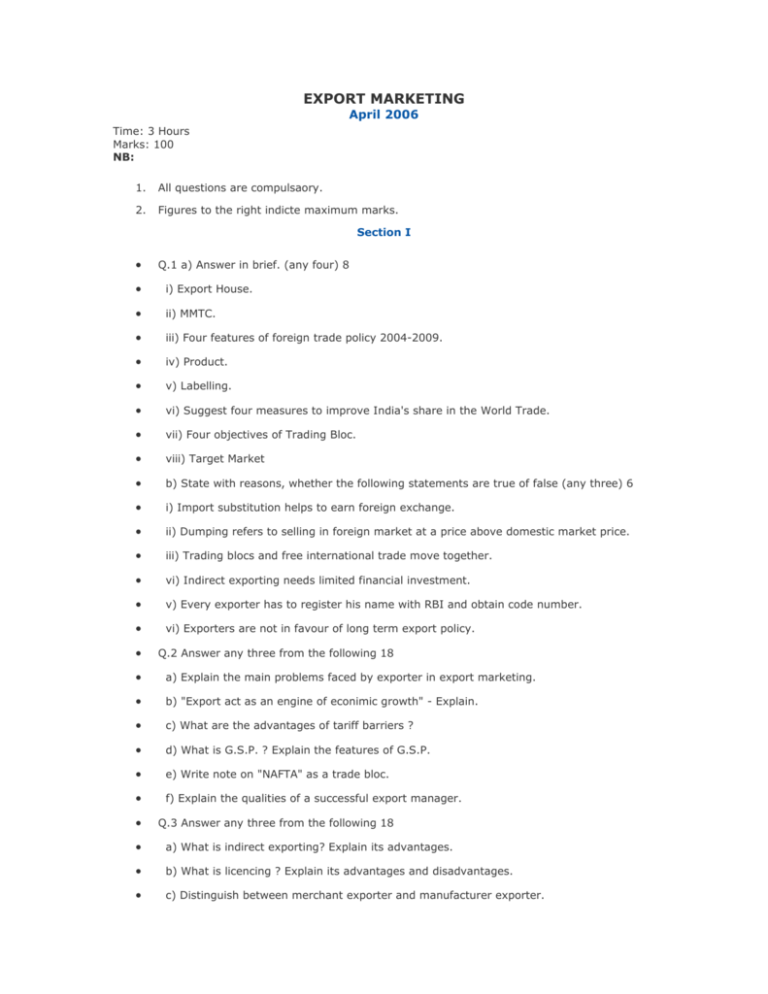
EXPORT MARKETING April 2006 Time: 3 Hours Marks: 100 NB: 1. All questions are compulsaory. 2. Figures to the right indicte maximum marks. Section I Q.1 a) Answer in brief. (any four) 8 i) Export House. ii) MMTC. iii) Four features of foreign trade policy 2004-2009. iv) Product. v) Labelling. vi) Suggest four measures to improve India's share in the World Trade. vii) Four objectives of Trading Bloc. viii) Target Market b) State with reasons, whether the following statements are true of false (any three) 6 i) Import substitution helps to earn foreign exchange. ii) Dumping refers to selling in foreign market at a price above domestic market price. iii) Trading blocs and free international trade move together. vi) Indirect exporting needs limited financial investment. v) Every exporter has to register his name with RBI and obtain code number. vi) Exporters are not in favour of long term export policy. Q.2 Answer any three from the following 18 a) Explain the main problems faced by exporter in export marketing. b) "Export act as an engine of econimic growth" - Explain. c) What are the advantages of tariff barriers ? d) What is G.S.P. ? Explain the features of G.S.P. e) Write note on "NAFTA" as a trade bloc. f) Explain the qualities of a successful export manager. Q.3 Answer any three from the following 18 a) What is indirect exporting? Explain its advantages. b) What is licencing ? Explain its advantages and disadvantages. c) Distinguish between merchant exporter and manufacturer exporter. d) What are the implications of EXIM policy 2002-2007 ? e) What is product planing ? Explain the need and importance of product planing. f) Explain the importance of after-sales service in export market. Section II Q.4 a) Answer in brief. (any four) 8 i) ECGC. ii) ARE-1 Form. iii) Mate's receipt. iv) Export worthy unit. v) C & F Agent. vi) DBK. vii) Airway Bill. viii) IRMAC Scheme. b) Give full forms of the following abbrevations 6 i) EPCG ii) OPEC iii) IIFT iv) STP v) IBRD vi) EIC Q.5 Answer any three from the following 18 a) Explain any two types of pricing strategies. b) What is pre-shipment finance ? What are its features ? c) Write a note on non-fund based assistance provided by commercial bank to exporter. d) Explain the role played by SIDBI in export promotion. e) What is letter of credit ? What are the advantages of letter of credit to the importer ? f) What is ISO-9000 ? What are its advantages ? Q.6 Answer any three from the following 18 a) What is commercial invioce ? What is the importance of commercial invoice ? b) What is Shipping Bill ? Explain its importance and contents. c) What are the different financial incentives available to the Indian exporter ? d) Write a note on MPEDA and ICA. e) What is SEZ ? Explain its features. f) From the following data calculate minimum FOB price in US $:- Cost of material Rs. 2,25,000 Cost of Labour Rs. 1,20,000 Local transport charges Rs. 18,000 Packing charges Rs. 12,000 Profit contribution Rs. 65,000 Duty Drawback 10% of FOB Price Conversion Rate 1 US $ = Rs. 45

